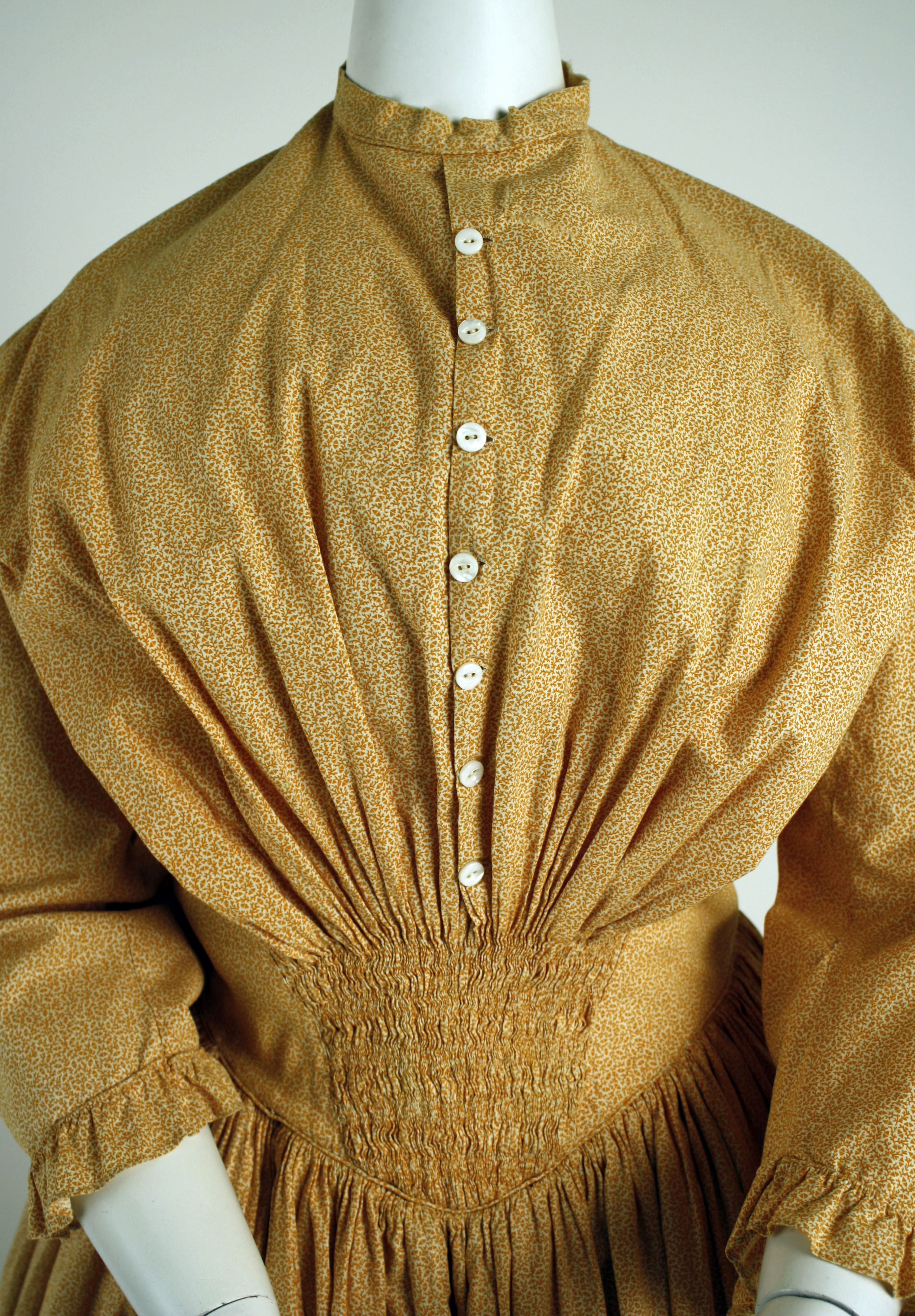I've got a couple of dress lengths intended for late 1840s wear, and assembled this set of original gowns for inspiration. I'll probably aim the first of them for c.1848. It's one of my favorite years in European history, but also would be practical for western USA living history events (peak trail year, Oregon statehood, etc).
 |
| Silk dress c.1845-9. LACMA. |
I'm working in cotton, not silk, but I like the effect of the self-fabric folds/pleats from shoulder to waist.
 |
| Cotton fanfront dress, c. 1845. LACMA |
I like the fan front on this one, though I'm not keen on those sleeves for this project.
| Cotton fanfront V-neck dress, c.1840. The Met. |
 |
| Cotton dress c.1840-1845. The Met. |
I sort of hate this one? Not sure if it's the color, those sad little ruffles at the wrist, the standing collar, or the buttons, but this dress just doesn't work for me. The years given are also a bit early for this project, so I can disregard it with impunity. The waist treatment, however, is really cool. The tightly shirred center front is really impressive and it works well with shallow V-shaped waist.
| Cotton print dress, American, c.1847. The Met. |
I want this. The wild stripe material pleases my heart. The tight bias sleeves are very '40s, contrasting nicely with the fuller sleeves of my '50s clothes. I like the subtlety of the self-fabric epaulettes. The fanfront bodice is a delight (and it's a front-fastener!). I'll need to work out the depth of the V-neck, but this is very promising for the green striped fabric.
| Cotton dress, 1840-1850. The Met. |
Not going to make this one, because I don't really like either the bodice or the sleeves, but I'm including it because that is some WILD pleating at the waist, which warrants further study. The self-fabric ruffles aren't working for me, though I note their existence.
| Dress, 1840-1845. The Met. |
This gingham check probably has the best overall aesthetic for what I'll end up doing on the beige foulard: a fairly plain bodice, with the patterned fabric providing most of the interest. I do like how they made the dense gathers work with the front-opening bodice, though I wonder at the sleeve construction, which appears to be a moderate bishop sleeve. This dress wouldn't look out of place in the 1850s.
| Dress c.1847. The Met. |
A back-fastening, low-neck, short-sleeved cotton print...the 1850s have me trained to see this as a teen's dress, though I should remind myself that some of those features appear in adult daywear earlier in the century. Not that this dress is clearly marked as being worn by a teen (or not). I do like the yoke with the open neckline....
No comments:
Post a Comment
Thanks for commenting!